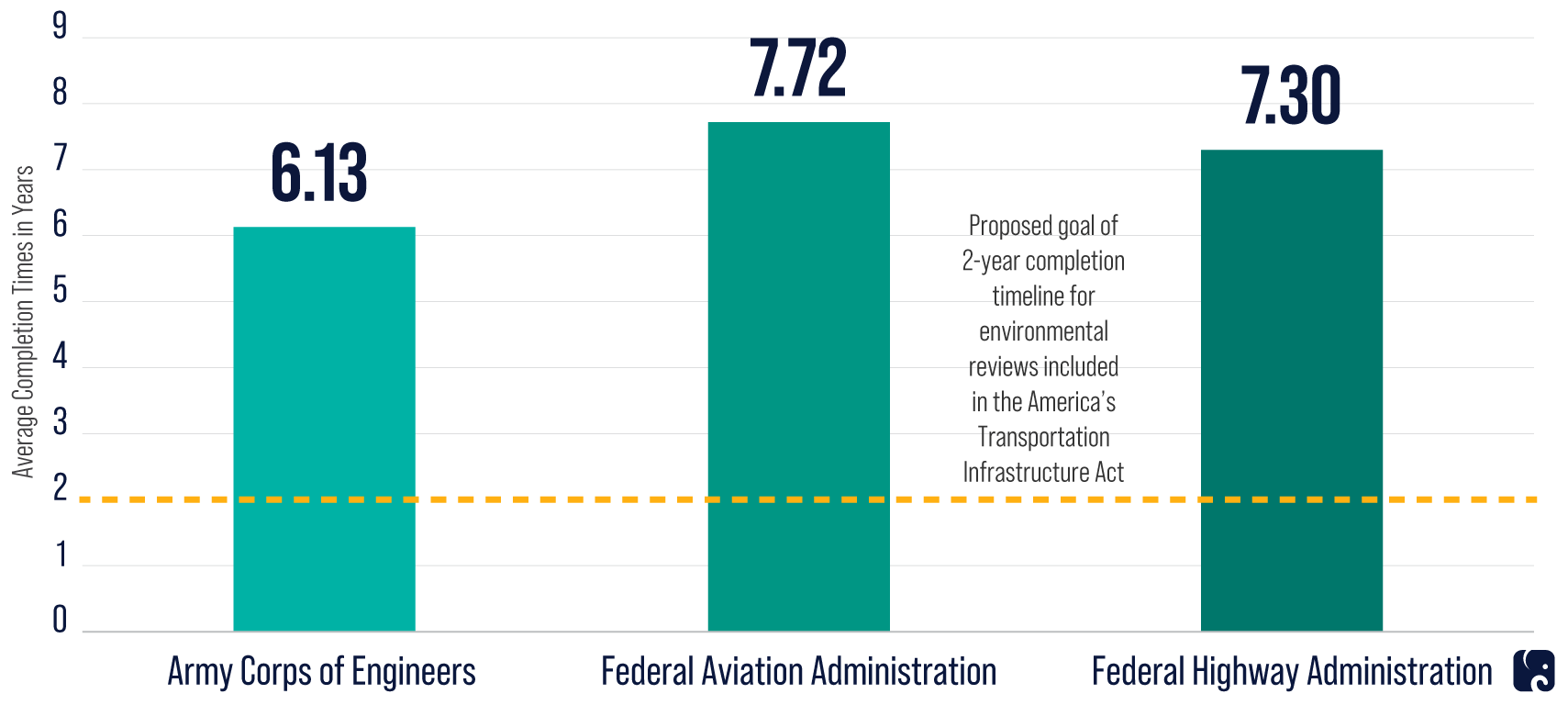To Fix America's Infrastructure, Make it Easier to Build
KEY TAKEAWAYS
- America needs to rebuild roads, bridges, and other major parts of our infrastructure, and the current lengthy process for environmental reviews undermines our ability to make updates.
- The average environmental impact statement takes 4.5 years to complete and covers 661 pages of documentation. For projects requiring approval from the Federal Highway Administration, the average EIS takes more than seven years.
- New investment in infrastructure should be paired with efforts to make reviews more efficient.
Efforts to fix and expand America’s infrastructure have bipartisan support in Congress. But President Biden, on his first day in office, took unilateral action to make it more difficult to rebuild the country’s crumbling roads, bridges, and waterways. Democrats have become more focused on funneling billions of dollars to “environmental justice” and unrelated initiatives than they are on actually improving infrastructure.
Republicans offered a framework to invest $568 billion to improve infrastructure, but the strategy will still fall short unless Washington finds a way to simplify the maze of federal regulations that delay permits.
“We can’t build back better if we can’t build.” – EPW Committee ranking member Shelley Moore Capito
The Glacial pace of environmental reviews
The National Environmental Policy Act of 1969 is the primary federal law guiding environmental reviews for major infrastructure projects. NEPA recognized the effect that growth and industrialization were having on the nation and set a comprehensive federal policy to safeguard the environment. Under the law, federal agencies must produce a detailed environmental impact statement when federal action stands to significantly affect the environment. NEPA also created the Council on Environmental Quality to implement the law.
Many projects do not require an EIS, but the process is lengthy for those that do. A 2018 review by CEQ found that over the previous eight years it took federal agencies an average of 4.5 years to complete an EIS. For projects requiring approval from the Federal Highway Administration, the process took more than seven years from when FHWA issues a “notice of intent” to the “record of decision.” The review process for one Colorado highway project took more than 13 years. For a project to update airport infrastructure in New Mexico, the process took 20 years. In a separate analysis, CEQ found that final EISs published between 2013 and 2018 averaged 661 pages.
Average Time for EIS Goes Way Beyond What’s Reasonable

Even after an EIS is complete, environmental groups frequently challenge the adequacy of the statement in court, adding more delay and cost to the process.
making the process more efficient
In 2015, Congress passed a bipartisan five-year highway law, the Fixing America’s Surface Transportation Act. The FAST Act included elements to bolster the efficiency of federal permitting processes. It created the Federal Permitting Improvement Steering Council to oversee and recommend ways to improve federal permitting. The law also directed the permitting council to create an online dashboard to publicize project schedules and document delays.
In 2017, President Trump signed an executive order to improve federal environmental reviews. It directed CEQ to set a deadline of two years for review and sought to identify a lead federal agency to coordinate with cooperating agencies and produce one EIS for projects involving multiple agencies. Last year, CEQ published a final rule to update the NEPA implementing regulations by incorporating components of the executive order.
In 2019, the Environment and Public Works Committee passed the America’s Transportation Infrastructure Act. This bill would have authorized federal highway programs and enacted into law several of the efforts to simplify and speed up federal reviews by calling for a two-year process. Every Democrat on the committee supported the legislation, which passed 21-0. President Biden went the opposite direction with his executive order on January 20, which rescinded President Trump’s executive order and instructed the CEQ to review the rule updating the NEPA implementing regulations.
Given the country’s significant infrastructure needs, Democrats should work with Republicans to ensure our limited resources are used as effectively as possible. Businesses involved in building infrastructure projects contend that permitting reforms are necessary to support growth and address delays. People on both sides of the aisle have called on Congress to take action to make it easier to build. Even President Obama acknowledged challenges in permitting while he was in office and directed agencies to speed up reviews. Any increase in infrastructure spending should be paired with reforms to ensure projects are completed as promptly as possible while preserving our environment.
Next Article Previous Article
